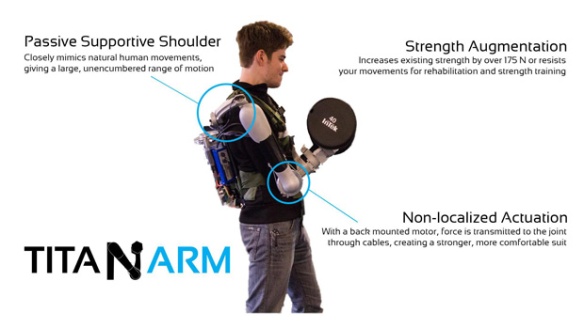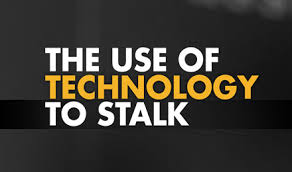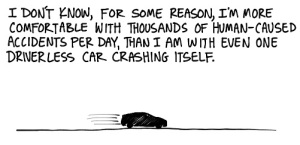This year Titan Arm won the International Design Competition award, led by entrepreneur James Dyson. The project, constructed by students at Pennsylvania University, unveiled a new and advanced exoskeleton, increasing upper-body strength by 40 pounds- and what is more, mechanical engineers have stated this is nothing compared to what it will be able to handle in the near future.
As we all know, along with the manufacturing of new technological gadgets come the inconceivable prices to make it happen. However, what I find surprising about Titan Arm is the cost. The equipment took £1,200 to build- £60,000 less than it takes to make current exoskeleton designs! And how? Well of course through 3D printing. Furthermore, just hearing of the combination of two new technologies is enough evidence to demonstrate that the rate of development is not going to stop anytime soon. Mr Dyson has said: “Titan Arm is obviously an ingenious design, but the team’s use of modern, rapid – and relatively inexpensive – manufacturing techniques makes the project even more compelling.”
Now here is a technological gadget I truly cannot fault; the applications are manifold, and with particular reference to employees and supervisors – for two reasons;
1) Over a third of injuries in the workplace are caused by manual handling– and so undoubtedly, Titan Arm, will provide much safety in the workplace.
2) The UK loses £6 billion in annual losses owing to manual handling injuries- and once again, with Titan Arm, this number would be significantly reduced.
Evidently, there is no reason why Titan Arm should not be infiltrated into all workplaces- however; this brings me on to the most important issue of all: society’s incessant search for the latest human augmentation project. I will be discussing how the use of technology is locking us into a system where – with the help of the media – we are perpetually changing the way we consider ourselves as human beings, and searching for constant improvement.
Everyone wants to be Superman
Williams states “There are cases where social influence can be traced – where, say inventions are responses to perceived issues. In other cases, inventive attention focuses on a particular technical issue because it is strategic for an expanding technological system.”

This brings me to another technical lock-in that has, unarguably, played a significant role for decades; the media. Superheroes continue to play a traditional role in the media, for instance movies such as Iron Man and Captain America- and this seems to be mirrored by a real world trend in scientific research for improvements in human augmentation, with the creation of a man-like suit (also known as the Hardiman project) in the 1960s. Combined, the two powerful institutions are making us closer to encompassing those superhero qualities.
Controlling innovation
The team behind Titan Arm (who have admitted to be ‘Iron Man fanatics’) have stated they intend to restrict certain areas of their research in order to “help the everyman- rather than creating a superman.” Yet, they seem to have no idea the ideas they have unleashed in other researcher’s minds.

Elsewhere the search for superhuman gadgets is steadily increasing. British innovation charity, Nesta, focus much of their research on bionics and prosthetics, with specific attention to furthering cognitive enhancement. The following video of Simon Schultz, the Director of the Neural-Coding Laboratory at Imperial College London made me think. How far we have advanced in the technological world- and most importantly, what are their future boundaries?
What implications would human gadgets have on individuals, globally?
Better by design?
A great concern revolves around the role of human enhancement in transforming how we understand ourselves. What does it mean to be human in today’s technologically advanced world? Perhaps we should step outside the box, and consider – for just one moment – the longer term consequences of altering human nature and capacity. The enhancement of human bodies beyond their ‘natural states’ ultimately suggests the need for new ways to understand ourselves and the role we play in society.
It is obvious the applications for the Titan Arm are manifold; and without a doubt, it will bring much improvement to various individuals in work fields. Professor of Ethics and Emerging Technologies, Miah states ‘we need a new set of ethical principles for an era of human enhancement’; and with this thought, come the positives and the negatives. Would it be possible in future to expect physical advancements that keep us adolescent fit even in our golden age?
Though I approach all these technologies with caution, I do acknowledge we are fortunate to witness and be a part of new technological advancements. As C P Snow once said, “technology is a queer thing. It brings you gifts with one hand, and stabs you in the back with the other.” We must proceed with caution with changing the human state; we know technological augmentation is possible, but is it morally acceptable?
– Shivani
NB: If you are interested in human enhancement, check out ‘Better Humans? The politics of human enhancement and life extension’ by Paul Miller & James Wilsdon- it is a fantastic read!






